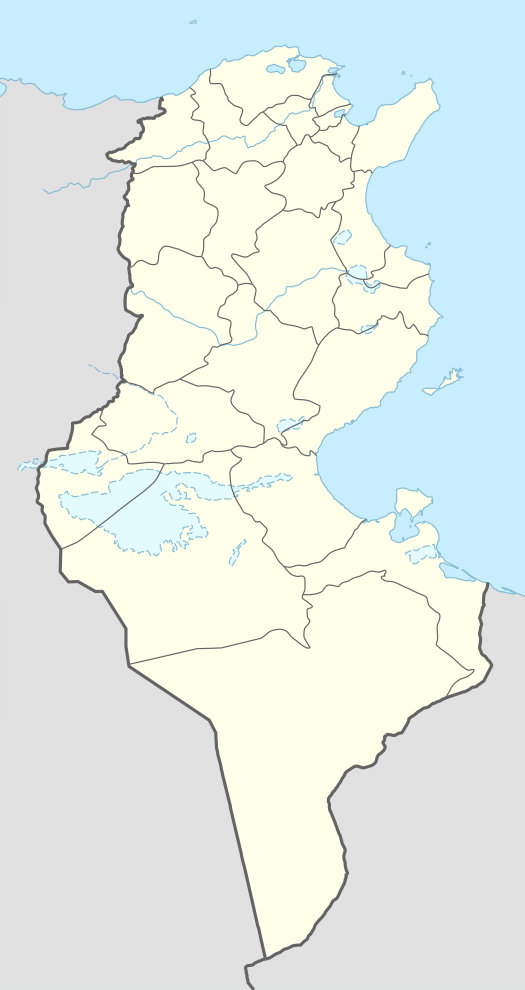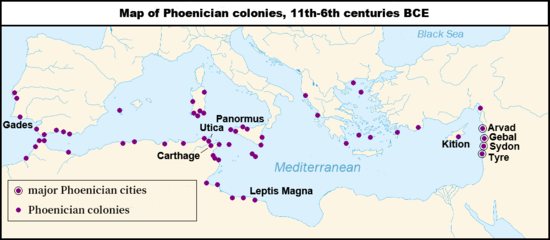Kerkouane
Kerkouane or Kerkuane (Arabic: كركوان, Karkwān) is the site of an ancient Punic city in north-eastern Tunisia, near Cape Bon. Kerkouane was one of the most important Punic cities, with Carthage, Hadrumetum (modern Sousse), and Utica. This Phoenician city was probably abandoned during the First Punic War (c. 250 BCE) and was not rebuilt by the Romans. It had existed for almost 400 years.
 | |
 Shown within Tunisia | |
| Location | Nabeul Governorate, Tunisia |
|---|---|
| Coordinates | 36.946389°N 11.099167°E |
| Official name | Punic Town of Kerkuane and its Necropolis |
| Type | Cultural |
| Criteria | iii |
| Designated | 1985 (9th session) |
| Reference no. | 332 |
| UNESCO Region | Arab States |
UNESCO declared the Punic town of Kerkouane and its necropolis a World Heritage Site in 1985, citing among other things that the remains constitute the only example of a Phoenicio-Punic city to have survived.
Name
The name Kerkouane was given to the town by archaeologists. Its name in antiquity has not been preserved in any known historical documents.[1]
Excavations
Kerkouane is a small town and was probably never home to more than 1,200 people, mostly fishermen and craftsmen. Based on the presence of many murex shells, it would appear that the town produced purple dye, in addition to salt and garum (a food product).[1]
Excavations of the town have revealed ruins and coins from the 4th and 3rd centuries BCE. Around the site where the layout is clearly visible, many houses still show their walls, and the coloured clay on the facades is often still visible. The town was built on a grid with wide streets and public squares. The houses were built to a standard plan, in accordance with a sophisticated notion of town planning.
Traces of red ochre found in excavated tombs are common also to native Libyan burial customs, but the religious and architectural traditions of the town are predominantly of Carthaginian style. A black-figure wine jug decorated with a scene from The Odyssey found with an Ionian cup, and Greek architectural elements like peristyle courtyards and stucco plaster decorations found among the remains of upscale private homes, show the town was influenced by the culture of the greater Mediterranean world.[1]
A sanctuary has some columns preserved, and in a small atrium parts of mosaics are found. Curbstones, doorsteps, thresholds, and floors of simple mosaic layers are found all over the ruins.[2]
There is an area for ritual banquets and a sacrificial altar. While archaeologists are unsure precisely which deities the temple was dedicated to, they speculate based on artifacts found at the such that it may have been Melqart, Sid and Tanit. Terracotta heads showing two males wearing conical hats resemble Sid and Melqart iconography known from the Temple of Antas in Sardinia.[1]
References
- Miles, Richard (July 21, 2011). Carthage Must Be Destroyed. United Kingdom.
- "Kerkouane". www.trekearth.com. Retrieved 2020-05-28.
Gallery
 Floor of Kerkouane
Floor of Kerkouane A bath
A bath A toilet
A toilet Remains of houses
Remains of houses- View of the archeological site
 Outside Kerkouane museum
Outside Kerkouane museum Plan of the site
Plan of the site Remains of Tamezrat
Remains of Tamezrat Remains of walls
Remains of walls- Remains of columns
 Sign of the site
Sign of the site.jpg) General view of the site
General view of the site
External links

- Lexicorient
- Kerkounane Guide
